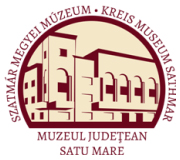Szőcs Péter Levente (szerk.): Cămin. Ghid cultural şi istoric (Satu Mare, 2010)
Archaeological vestiges
the positioning of settlements near the old course of the Crasna River. The archaeological researches have revealed that the husbandry became the preponderant occupation during the Copper Age, because the acquirement of the skill to use the animals’ secondary products: milk, wool, animal traction. Undoubtedly, the high hydrophilic plants of the Crasna Plain were very favourable for grazing in the periods when the land was covered with snow. No traces of habitation were identified on Cămin’s territory, dating to the second millennium BC, but they come to be well represented during the first millennium BC, a period called by the archaeologists as the Iron Age. Near the old bridge over the Crasna, destroyed during the Second World War, two settlements were discovered, one dating to the early first millennium BC, while the second one dates to the middle of the same millennium. A group of bronze pieces were found in 1889, during the drain works of the Ecedea Swamps, and they are probably related to the first of the settlements mentioned above. Consisting of nine axes, a sickle and a spearhead, the group of pieces is part of the archaeological category called “bronze deposits”, such discovery type being widespread throughout Europe, with a maximum concentration in the area of the Upper Tisa River. More and more evidence have been revealed recently, indicating that the weapons, Oală eneolitică de la Cămin-Podul Crasnei Rézkori edény Kálmánd-Kraszna híd lelőhelyről Eneolitic pot discovered at Cămin-Podul Crasnei site 5
